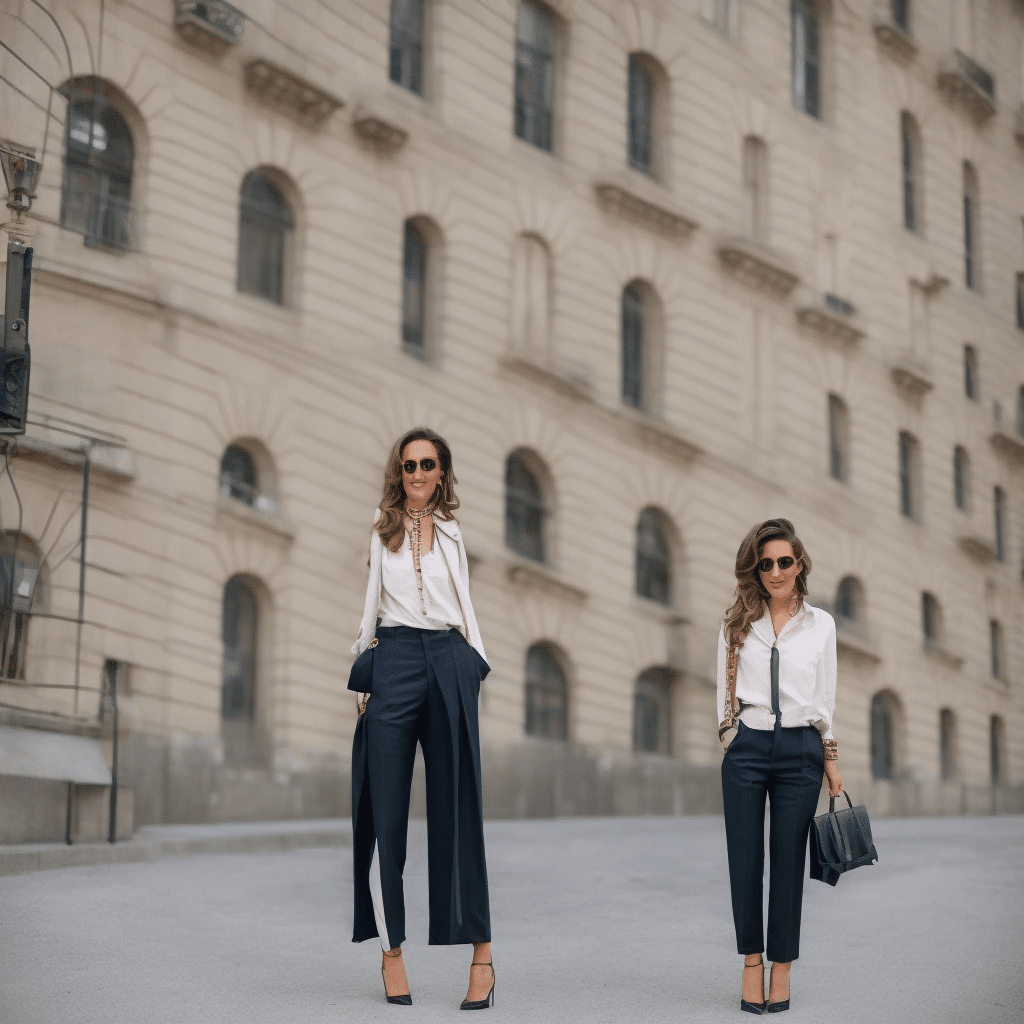What Are the Essential Tips for Mixing and Matching Basic Pieces for New Outfits?

Do you find yourselves standing in front of your wardrobe full of clothes, yet feel like you have nothing to wear? You’re not alone! Many women experience this fashion conundrum. Fashion should be fun and expressive, not a source of stress. Luckily, the solution lies not in buying more clothes, but in mixing and matching what you already have in your wardrobe. Let’s delve into some essential tips that will help you create new, stylish outfits from your existing clothes.
Understanding Your Wardrobe
First things first, you need to understand what’s in your wardrobe. Divide your clothes into two categories: basics and statement pieces.
Sujet a lire : What Are the Best Simple Outerwear Pieces for Layering in Transitional Weather?
Basics are simple, typically single color garments that serve as the foundation of your outfit. These items are versatile and timeless. Think black trousers, white tees, and denim jackets. On the other hand, statement pieces are unique, stand-out items that can range from a patterned skirt to a brightly colored top.
By categorizing, you will visually see a broad scope of options for mixing and matching your clothes into new outfits.
Dans le meme genre : How to Create a Minimalist Yet Fashionable Look with a Monochrome Palette?
Mastering the Art of Color Matching
Color is a crucial element of any outfit. Knowing which colors work together can significantly simplify the process of creating outfits. Here are a few color-matching principles to help you:
- Complementary Colors: These are colors that are opposite each other on the color wheel. Pairing these colors, like red and green or blue and orange, will create a vibrant, high-contrast look.
- Analogous Colors: These are colors that are next to each other on the color wheel. Outfits using analogous colors, like blue and green, will look harmonious and coordinated.
- Monochromatic Colors: This involves wearing different shades of the same color. It’s a sophisticated look that can make your outfit appear cohesive and coordinated.
While these guidelines are helpful, don’t be afraid to experiment with color. Fashion is all about personal expression, so if you feel confident in a specific color combination, go for it!
The Rule of Three for Mixing Patterns
Mixing patterns can be intimidating, but it’s a fantastic way to create unique, dynamic outfits. For beginners, the rule of three is a great starting point: limit yourself to three different patterns in one outfit.
Begin with a dominant pattern that will serve as the focal point. This could be a bold floral dress, a striped blazer, or a polka dot top. Then choose a secondary pattern that complements the dominant one without overpowering it, such as a subtle plaid or a small-scale floral print. Lastly, if you feel adventurous, add a third pattern that shares at least one color with one of the other two patterns.
Remember, the key is balance. Don’t let your patterns compete with each other.
Building a Capsule Wardrobe
A capsule wardrobe is a collection of essential items that do not go out of style and can be supplemented with seasonal pieces. It’s an excellent solution for those who feel overwhelmed by their wardrobe or want to adopt a minimalist lifestyle.
To create a capsule wardrobe, select versatile pieces that you adore and wear regularly. This typically includes a few tops, bottoms, dresses, outerwear, and shoes. The goal is not to limit your wardrobe but to create a functional, coordinated collection that makes dressing every day easier.
A capsule wardrobe is not static. You can always add or remove items as your style, needs, and preferences change.
Mixing High and Low Fashion
One of the most fun aspects of fashion is the ability to mix high and low pieces. Pairing a designer handbag with a budget-friendly dress, or a high-end pair of shoes with a pair of denim from the high street, can create a stylish, contemporary look.
The key to successfully mixing high and low fashion lies in the details. Pay attention to the quality, fit, and fabric of your clothes. A well-fitted, high-quality item from a budget brand can look just as chic as a designer piece.
Remember, fashion is about expressing your personal style, and there are no hard and fast rules. Allow yourself to experiment, have fun, and create outfits that make you feel confident and beautiful.
Utilizing Versatile Pieces and Mini Capsules
A clever way to maximize the potential of your wardrobe is by identifying and utilizing versatile pieces. These are items that can be styled in multiple ways and paired with different kinds of outfits. For example, a leather jacket can be worn over a dress for a chic, edgy look, or paired with jeans and a t-shirt for a casual, cool vibe.
Creating mini capsules within your wardrobe is another practical strategy. A mini capsule is a small collection of clothes that work well together and can be mixed and matched to create various outfits. Typically, a mini capsule consists of around four to six items, including tops, bottoms, and a layering piece or two.
When assembling a mini capsule, consider the color palette, the occasion, and the season. For instance, you could create a mini capsule for work, comprising neutral colors like black, white, and gray. Or, perhaps a summer mini capsule, full of bright colors and lightweight fabrics.
The key here is to select items that can be worn together in different combinations, offering you maximum versatility and a multitude of outfit options from a small selection of clothes.
The Impact of Color Theory and Skin Tone
Understanding color theory is a fundamental aspect of learning to mix and match clothes. The color wheel is an excellent tool to guide your color combinations. It helps you to identify complementary colors, analogous colors, and monochromatic shades. But to take it a step further, you should also consider your skin tone when selecting colors.
Each person has a unique skin tone that falls under one of the four main categories: warm, cool, neutral, or olive. Your skin tone can greatly influence how colors look on you. For example, if you have a warm skin tone, earthy colors like mustard, rust, and olive green can enhance your complexion. Conversely, cool skin tones often pair well with jewel tones like emerald green and royal blue.
Understanding your skin tone and the colors that complement it can help you create stylish, flattering outfits. Remember, you can always deviate from these guidelines if you feel a particular color expresses your personal style and makes you feel great!
Conclusion
Fashion should never be a source of stress. With the right knowledge and approach, you can transform your existing wardrobe into an endless array of stylish outfits.
Remember to identify your wardrobe staples and categorize them into basics and statement pieces. Master the art of color matching by using the color wheel and understanding your skin tone, and don’t shy away from mixing patterns.
Consider building a capsule wardrobe or mini capsules for maximum versatility, and don’t forget the fun of high and low fashion mixing.
Ultimately, fashion is a form of self-expression. So, experiment freely, be bold with your color and pattern choices, and most importantly, wear what makes you feel confident and beautiful. The world is your runway, and you are the star!
